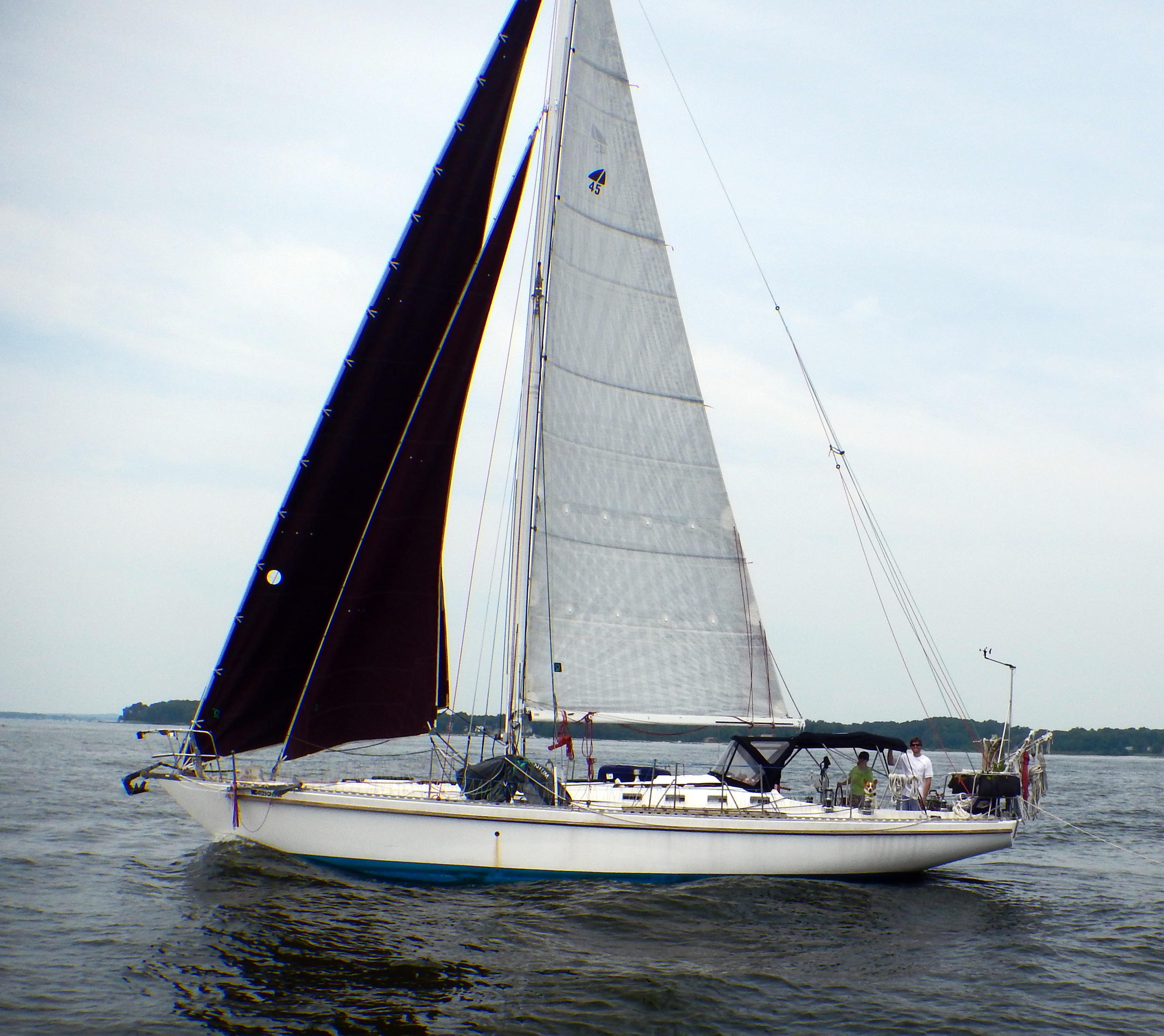Last time we talked about the pros and cons of white sails, now we will talk about the same for tanbark sails.
The advantages of tanbark:
They are more visible in fog than white sails
They are not blinding to look at during the day
They are easily recognized
They don't show dirt
The cons of tanbark:
They cost a bit more
They can't be seen by night
The material is slightly more stretchy
In low light, the white sails still shine while the tanbark sails appear black
To address cost, they are a bit more expensive. My sailmaker charges about 25% more for tanbark. This turns out to be a difference from $1100 for the staysail in white to $1600 for tanbark. For the main, it would have been a difference of $6800 for tanbark vs $5000 for white. With the main, I went a completely different direction which will be discussed in the future when we talk about laminated sails vs cloth. When taken into the grand scheme of total sail cost, it wasn't that much of a premium to have the sails made in tanbark as opposed to white.
The sails look black even at sunset
Night time sailing is an issue and there is no way around it. We like to sleep next to each other all night rather than doing watches, so night sailing isn't an issue for us. We like to anchor if we are in the bay, or heave to if we are off-shore. When I would have to trim in the dark, I ended up doing it by feel to avoid blinding myself with a flashlight. I would grind the winch until the leech would stop fluttering or the sheet would stop shaking, but I had no idea what the tell tails were doing.
The other downfall of tanbark is that the dying process of the dacron cloth is rather harsh. Natural dacron is white, and to make the dye stick they have to treat it with harsh chemicals. This does make the cloth slightly more stretchy and decreases its longevity.
A reduced working life and higher price does detract from the sails allure, but is it worth it? Would you rather stare at a pretty, easy on the eyes sail for say 6 years before it looses shape, or a blindingly white sail for 7 years before it looses shape? As you can tell, I chose the tanbark route for the headsails because I feel that paying a little more for comfort is worthwhile.
Next time we will talk about the positive points for Tanbark Sails in Part 3







